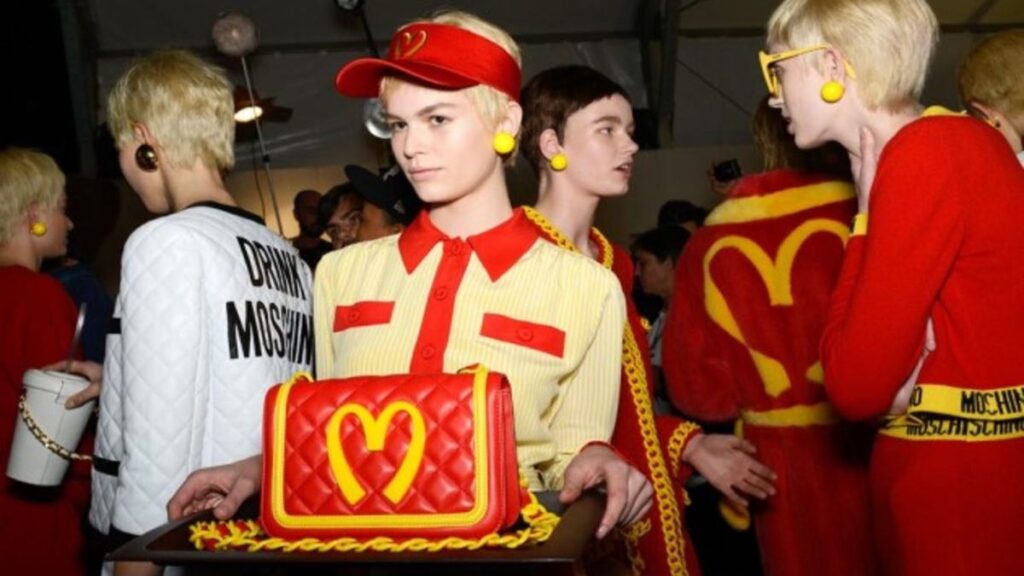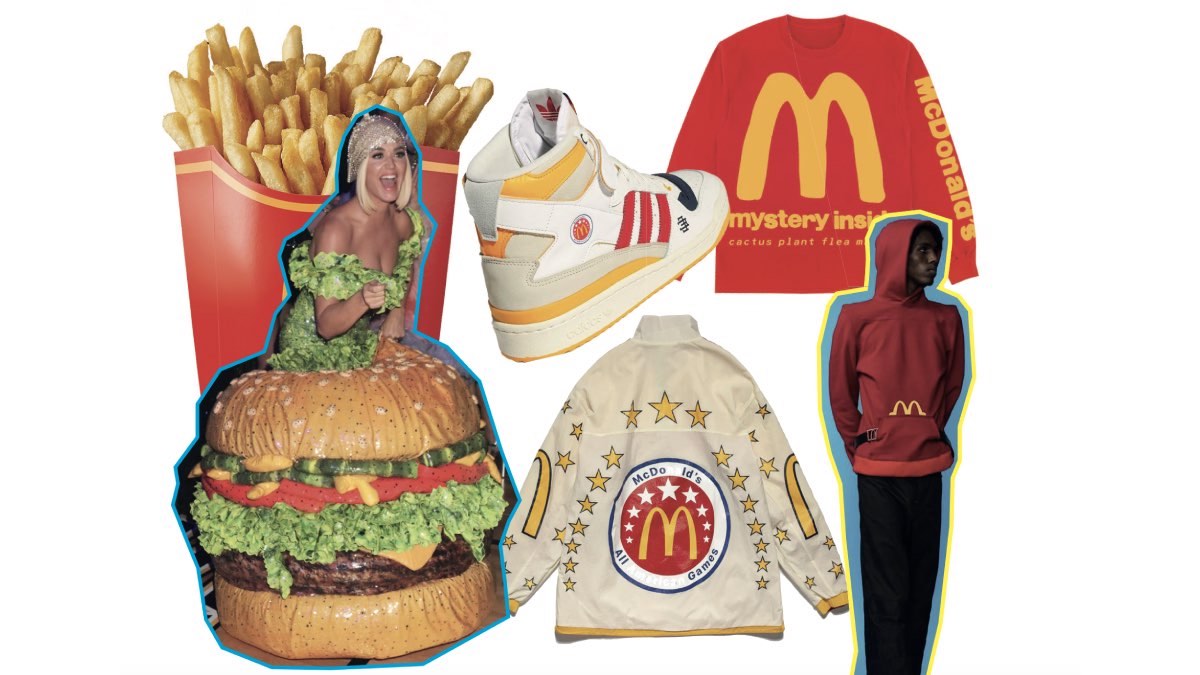Click here to read the Spanish version.
I don’t remember the first time I set foot on solid ground in McDonald’s territory, but I do remember all the other times that followed that first moment. I also remember the afternoons of friends’ birthdays among hamburgers, little red cardboard boxes and the anxiety to get our hands on all the toys that were included in the Happy Meal boxes. Whoever managed to get their hands on just the toy they wanted from the vast collection, randomly added to the order, instantly grabbed the attention of their entire group. Come to think of it, what was at stake? The desire to get all the prizes? The popularity of the team? To outscore one’s teammate? To be the lucky winner in that impossible draw? In any case, we were all awakened to the feeling of deserving the statuette.
Because the so-called ‘happy boxes’ of the company founded in 1940 by the brothers Dick and Mac MacDonald, whose claim became an object of desire at an early age: It’s not the same without the M, already hint at it. The now multinational was created, but did not become active until eight years later, when it began operating as a company dedicated to the promulgation of the term ‘fast food’. However, before I dive into the answer to the question, I must highlight the name of a person and a year in the calendar: Ray Kroc, the person responsible for turning McDonald’s into what it is today, the first successful fast food franchise. He did so in 1955, and then continued not as a patron but as the image of the project. In this expansion and internationalisation lies the magic of the company for other industries. The one that shelters the textile sector and its universe of accessories, for example.
The recipe for success
Beyond the personal experiences of each person – and the open debate between being a member of one burger chain or another, as everyone knows – there is a reality that conquers the palate by its own weight: the taste for its menus has gained the acceptance of children, young people and adults. Or is it that no one has invested a minimum percentage of their salary in a burger in the wee hours of the morning? With memories to suit all tastes, there are those of Jimi Vain, a Finnish fashion designer who, with his brand Vain, has made ‘slow fashion’ a way of working with textiles in a conscious way. He points out that his relationship with McDonald’s goes beyond a way of satisfying hunger. “Growing up in a rural area, the food chain was also a way for us to stay connected to the global popular culture of the city,” he confessed when presented with the opportunity to collaborate with them to create 13 pieces that would highlight the enormous visual power of these burgers, as a tribute to the chain’s uniform.
Because if there is something as recognisable worldwide as a Big Mac, it is the outfit with which a funny clown serves it at the table: yellow dungarees, red and white striped T-shirt and socks and red shoes, a look similar to the one worn by the multinational’s workers; and it is along these lines that the collection proposed by Vain is inspired. The aim is none other than to worship both worlds. On the one hand, fashion, a business that is gaining more and more followers and that contributes so much to the growth of the economy in countries; and on the other, the chain that not only provides food, but has taken over a piece of every adult’s childhood.
Those of us families who ordered burgers, with double cheese and no pickles, are today witnessing this, at first glance, not at all predictable dimension of a brand that can boast a logo more recognisable than the Christian cross. This is what 24-year-old Jimi Vain was told when the chain wrote to him to offer him a collaboration. It was through an email that the company – which has almost 40,000 outlets worldwide and serves more than 65 million customers a day – chose to pour Vain’s imagination into the burgers. And so, he who saw McDonald’s as a youth centre where to go to have fun with friends, has ended up being the creator of Vain x McDonald’s: handmade garments in the form of an oversize jacket, a midi skirt -checked and buttoned with an asymmetrical hem- and a tuxedo-shaped dress. According to the statement, “the idea was to create something that he and his friends would wear” and also to “talk about McDonald’s in a fashion and luxury context” to break the cliché that links the brand only to more affordable economies.
However, just because fast food is going out of its comfort zone and maintaining ties with companies in other sectors is still a surprise, it doesn’t mean it’s not a coexistent activity with current practices in the business world. And as recently as last spring, the fast-food franchise partnered with Adidas and sportswear designer Eric Emanuel to work on an exclusive collection that included a number of items in keeping with the pair’s creative style. In October 2022, it launched a collection with Californian cult brand Cactus Plant Flea Market (CPFM) by Pharrell Williams’ stylist – artist and new creative director of Louis Vuitton’s men’s line – Cynthia Lu.
The footbridge and the embers
Far from being the only collaborations, the firms on the industry’s front row also wanted to do their bit in the mission to change the way McDonald’s is seen by the general public and the intention to make the company a benchmark of quasi-luxury. Moschino offered an ode to McDonald’s with its spring 2014 proposal, because it is well known that Jeremy Scott, its creative director, has a predilection for making the everyday a tool for conquering exclusivity. More recently, the well-known Vetements did the same with its collection for the summer of 2020, with which it devised a wardrobe with clear references to the most famous hamburger.

Curious to know why they are betting on advertising when they really don’t need it, the chain’s marketing director, Mats Nyström, said: “Traditional advertising doesn’t work when you’re trying to keep a brand like McDonald’s well positioned in the digital age”. That is the chain: a company with years of history that targets a young audience, an audience that is increasingly interested in their physical appearance, in taking care of their image. Young people who one day will not be young, but will continue to live on nostalgia, as happens every time an adult takes a bite of a Big Mac or tastes a McFlurry – or sees a child enjoying a Happy Meal at the next table.
Then, at that precise moment, the new young people and those who once were young consume the same brand and “not only eat our products, but also our brand”, no matter how many years have passed. And this is what fashion works in this sense, in making a specific garment or line, perishable sooner or later, an entry in the industry’s dictionary to turn to when a trend needs to be revised. And if one thing is clear, it is that all the collaborations McDonald’s has executed in recent years will occupy an important place in the search engines. It was CPFM when after its capsule collection the brand became the first entry in Google searches in the USA.
Will something similar happen with the next proposal to lead the restaurant franchise? We’ll have to ask Nigo, the Japanese streetwear designer at the helm of Kenzo’s creative direction, who has already hinted at some surprising McDonald’s-related work. Without firm confirmation, a black and white video of California’s oldest burger stand on his Instagram profile has sparked rumours of the greatness of a food emporium and a Japanese fashion giant.
For all these reasons, and returning to the question that gives title to this reflection, the Chicago-based burger chain has sometimes done more for the fashion sector than for the industry to which it belongs, that of fast food. This juxtaposition of mass appeal and exclusivity, especially in the realm of luxury fashion, is very powerful for younger generations who have grown up connected to digital devices and are therefore looking for a polished aesthetic, which entices them to do new things. And this is what McDonald’s has realised, for while they claim that “authenticity is our secret sauce”, that they want to conquer the world in the hands of those who will be their future is no secret. No secret at all.

